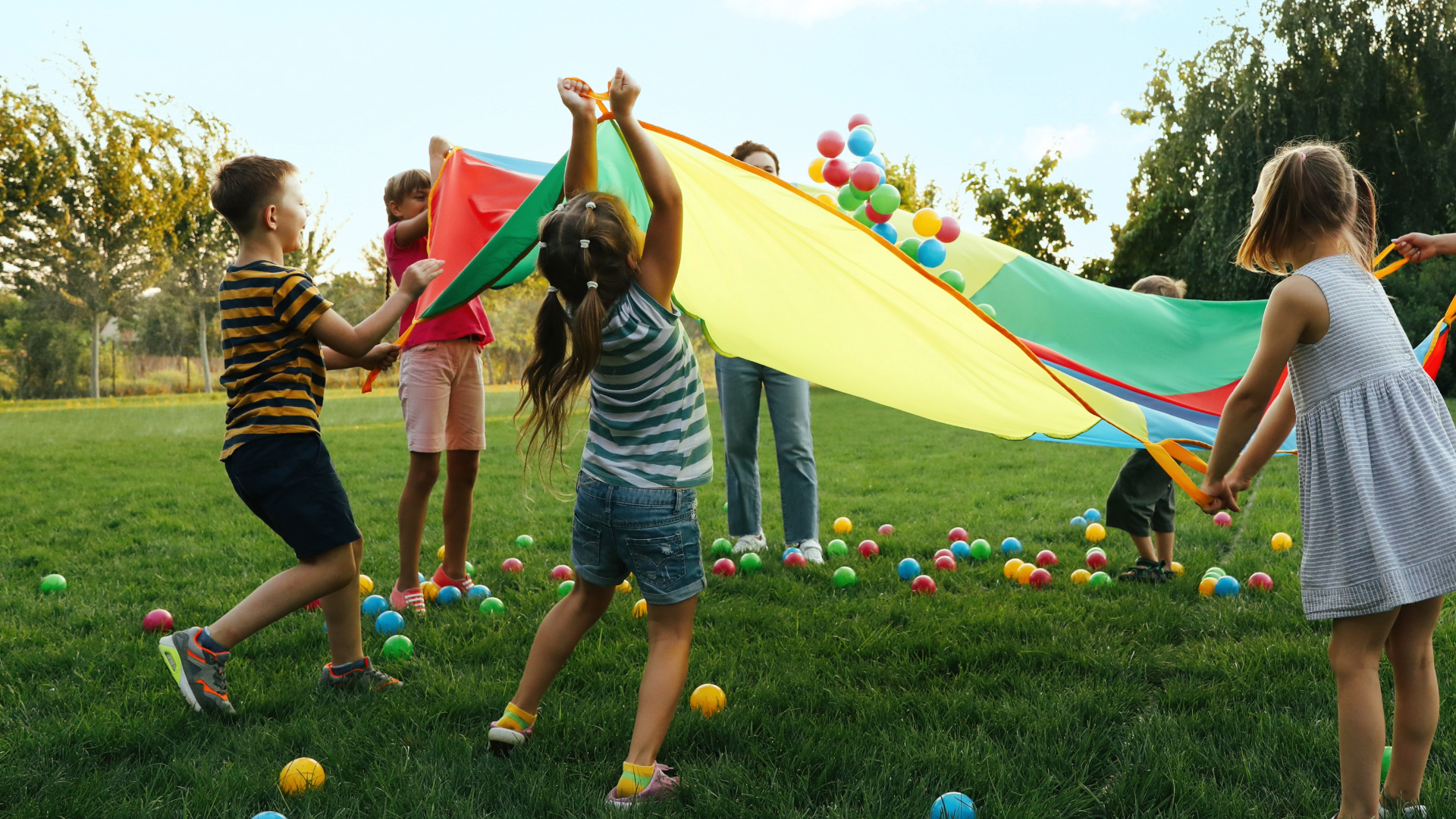By: Jennifer Stein
Jennifer is a communications expert, active play enthusiast, and proud mom to two.
Do you remember recess when you were a child? We used to have a good 60-90 minutes of recess back in the 80s… (I know I’m showing my age) Recess is an important time for children to unwind, socialize, and engage in physical activity, but now it is being squeezed by the pressures of academic performance and standardized testing. This trend has significant implications for the holistic development of children, affecting their physical health, social skills, and overall well-being.
Have you noticed this trend? Do you know how long your child gets for recess? According to the CDC, kids should get at least 20 minutes of recess per day to help children reach the national recommendation of 60 minutes or more of daily physical activity. But a survey by the Robert Wood Johnson Foundation found that only 36% of children aged 6 to 11 get even that much. In some districts, recess has been cut down to just 10 minutes, or worse, in some cases recess is taken away from students as a punishment for “bad behavior”, BUT more recess could actually be the answer to solving behavioral issues.
The Importance of Recess
How Physical Activity Helps with Behavior
As parents, we’ve all seen how kids can get antsy and act out when they’ve been cooped up too long, where the expression ‘My kids are bouncing off the walls’ comes from. It turns out, there’s a good reason for that. Physical activity is a game-changer when it comes to kids’ behavior. Here’s how it helps:
1. Reduces Stress and Anxiety
Think about how a walk or a run can clear your head after a stressful day. It’s the same for kids. Physical activity helps lower stress levels and makes kids feel calmer. When they’re less stressed, they’re less likely to have meltdowns or act out. For example, if your child is anxious about a test, some playtime outside can help them relax and feel more ready to face it.
2. Enhances Mood and Emotional Regulation
Exercise boosts the brain chemicals that make us feel good, like endorphins. When kids are in a better mood, they handle frustrations and social interactions more smoothly. Remember how your child seemed so much happier and cooperative after a game of soccer or a bike ride? That’s those endorphins at work.
3. Improves Attention and Focus
Physical activity can really help with concentration. If you’ve noticed your child has a hard time sitting still during homework, a quick run around the yard or a dance-off in the living room can reset their focus. Active kids tend to be more attentive and less likely to get distracted.
4. Burns Off Excess Energy
Kids have a lot of energy, and if they don’t get a chance to burn it off, it can lead to hyperactivity and restlessness. Physical activity gives them an outlet. Think about how much calmer your child is after a playdate at the park versus a day spent indoors. They’re just better behaved when they’ve had a chance to run around.
5. Promotes Better Sleep
Active kids sleep better, and we all know how crucial good sleep is for behavior. When your child gets enough physical activity during the day, they’re more likely to fall asleep easily and wake up rested. A well-rested child is less cranky and more able to handle the day’s challenges.
6. Develops Social Skills and Cooperation
Activities like playground games teach kids how to cooperate, take turns, and follow rules. These social skills are crucial for good behavior. For instance, playing a game of soccer can teach your child about teamwork and respecting others, which can translate to better behavior at home and school.
7. Provides an Outlet for Emotions
Kids need a way to let out their emotions. Physical activity gives them a positive outlet. Instead of acting out when they’re frustrated, they can release that energy through play. If your child has had a rough day, a trampoline session or a vigorous game of tag can do wonders for their mood.
The Downside of Cutting Recess
Cutting recess to boost academic performance often backfires. Without enough breaks, kids get restless, less attentive, and more prone to behavioral issues, which actually hampers learning. Plus, the lack of physical activity during the school day can lead to a sedentary lifestyle, increasing the risk of health problems like obesity.
Advocating for Recess
There’s a growing movement to bring recess back. Parents, educators, and health professionals are pushing for policies that prioritize recess as a vital part of the school day. Want to be a part of that movement?
Here is where you can start; reach out to the president of your PTA, PTSA, PA, SEPTA or other school parent association to discuss your concerns regarding recess. Through your school parent association you can then set up a meeting with your school’s principal to discuss these concerns about recess.
Conclusion
As we rethink the structure of the school day, we need to remember that recess is not a luxury but a necessity. Ensuring kids have ample time for unstructured play is vital for their physical health, cognitive development, social skills, and emotional well-being. By valuing recess, we’re investing in the holistic development of our children, setting them up for healthier, happier, and more successful futures.
This conversation about recess isn’t just about playtime; it’s about acknowledging and nurturing the whole child. Let’s reclaim recess and give our kids the time they need to grow and thrive.






